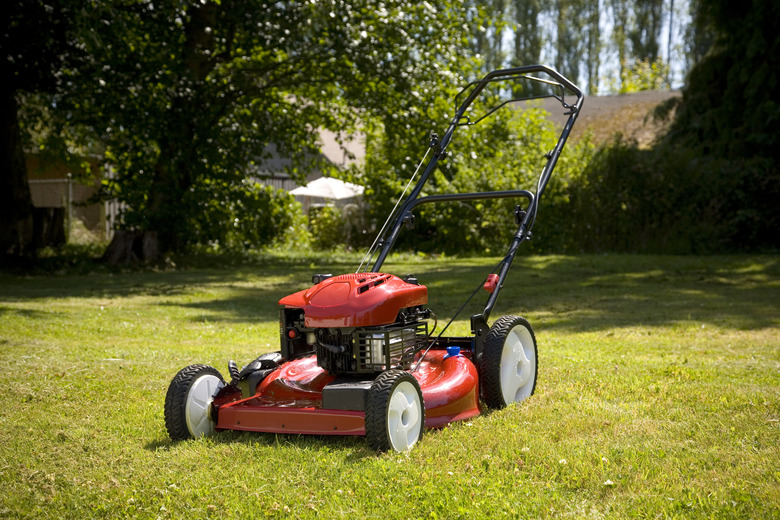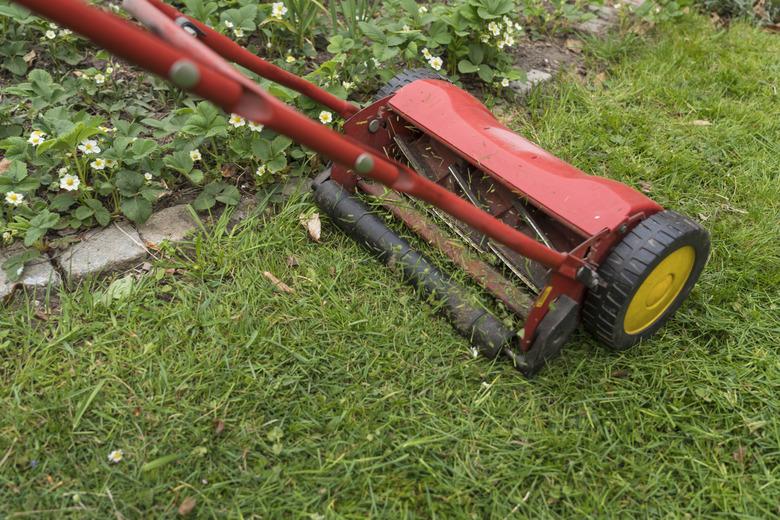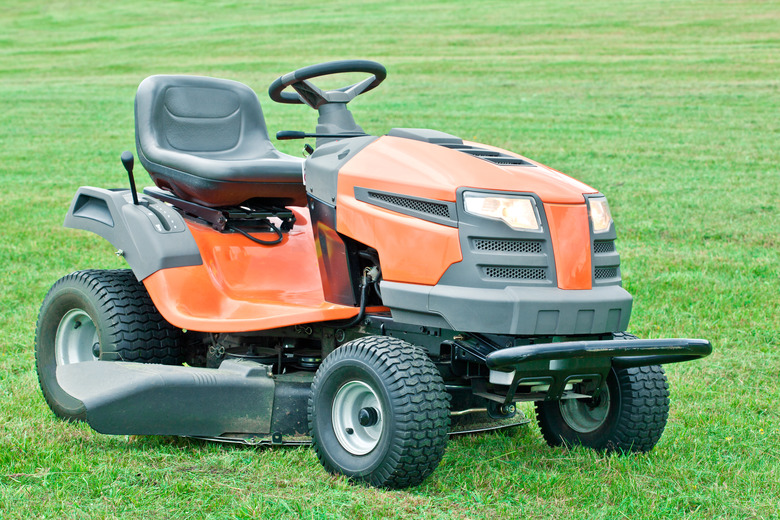Lawn Mower Buying Guide For Every Type Of Lawn
We may receive a commission on purchases made from links.
Finding the right lawn mower for your yard may seem a bit overwhelming, especially if your yard is large or if it has a steep slope or two. Budget may also be a factor, particularly for a sizable property that requires a riding lawn mower. A buying guide helps break down which factors are most important and which are specific to your yard so you won't have to deal with decision fatigue during your next lawn mower purchase.
Narrowing Your Lawn Mower Options
Narrowing Your Lawn Mower Options
Yard size is one of the main factors to consider before buying a lawn mower. If the grass-covered areas span 1/4 acre or more, riding mowers and lawn tractors are obvious choices since pushing a mower over a sizable property is a lot of work, and the lawn needs to be mowed numerous times throughout the growing season.
The terrain of your yard is another key consideration, as steep slopes require equipment that can handle the mow. Budget is also important, especially for a large yard that requires a beefy mower, as the range and potential options available vary quite a bit from the simplest riding mowers to the heavy-duty workhorse lawn tractors packed with extra features.
The amount of effort you want to put into the mow is another consideration. For instance, a push mower may be suitable for a small suburban lawn, but if you have health conditions that make it difficult to push a mower or if the yard is a bit on the larger side, a self-propelled walk-behind mower or a riding mower may be better for you.
Once you have a general idea of the type of mower your yard needs, take a good look at several similar models to note the location of the ports to add gas or oil as well as how to access the air filter (on gas-powered models). It should be easy to check the gas and oil levels as well as the air filter, and it should be equally easy to add fluids and clean or replace the air filter when necessary. Awkward placement for any of these could make simple mower maintenance far too aggravating. The same holds true with deck and speed adjustments on a riding mower or tractor. These should be easy to locate and operate while seated in the operating position.
Simple Solutions for Small Yards
Simple Solutions for Small Yards
If your yard is small enough to mow with a push mower in 30 minutes or so and you're up for the task, there's no need to consider heavy-duty riding mowers. Basic gas, electric or completely human-powered push lawn mowers are all you'll need to keep the grass cut to a respectable height.
The least expensive and most manual of them all is the push reel mower, which is essentially an open cylinder of blades that is powered as you push the mower handle. As the cylinder turns, the blades trim the grass. This mower is the most eco-friendly of them all, as it requires no electricity or gas. It even offers the chance to get a little exercise as you mow. These are best for smooth, flat lawns, as bumpy spots may be a bit tricky. Push reel mowers work best if you mow regularly so the grass doesn't get too tall. Tall grass is much harder to push through with this style of mower compared to the average power mower.
As for other relatively inexpensive walk-behind (push) mowers, your options are gas and either corded or cordless electric lawn mowers. Gas mowers require checking the gas and oil levels regularly and refilling those fluids from time to time. Corded electric mowers generally require less maintenance, yet some find dealing with the cord a bit cumbersome. You'll also need an outdoor extension cord and a handy outlet nearby. Battery-operated rechargeable mowers are the perfect solution for a relatively small lawn, as they're lightweight, quieter than gas mowers and powerful enough to easily mow the entire yard in one charge.
Walk-Behind Mower Features
Walk-Behind Mower Features
Besides options for gas, electric or rechargeable battery power, some walk-behind mowers are self-propelled, doing most of the pushing on your behalf. You still hold the mower handle and walk behind it as usual, but there's no struggle involved, as the mower does all the work except steering. Expect to pay at least $100 more for a self-propelled mower compared to a similar human-propelled mower. Self-propelled mowers come in rear-wheel, front-wheel and all-wheel drive. Rear-wheel and all-wheel drive come in handy on slopes, while front-wheel drive is best for flat, level lawns.
A self-propelled mower is a great choice for mowing slopes or tall grass, as the mower eliminates the need to push through changes in elevation or through thick grass. Some mow at a fixed speed, while a variable-speed option offers better control for mowing the lawn at a pace that works well for you and for your lawn's topography.
As with most walk-behind mowers, self-propelled mowers automatically turn off if you let go of the handle or power lever. This feature is especially important with a mower that can move on its own. Another common feature is wheels that swivel, which makes it easier to guide the mower as you make turns. Some self-propelled mowers are difficult to maneuver out of the garage or shed while the mower is off since the wheels don't turn freely.
Mower manufacturers use terminology such as "two-function" or "three-function" mowers. All this really means is what the mower does with the cut grass, although the terminology around the functions varies a little by brand. A two-function mower means it mulches or bags the grass clippings or it offers side discharge or bagging. A three-function mower offers side discharge as well as bagging or mulching. Mulching is a nice option, as it cuts the grass into small clippings that easily break down, returning nitrogen to the soil.
Best Mowers for Steep Slopes
Best Mowers for Steep Slopes
Dealing with a steep slope is a tricky situation even if you are just walking up or down it without a mower. In many cases, it's best to tackle the task with more than one mower if the area is too large to handle with a push mower. Use the lightest, most maneuverable push mower or a self-propelled mower on steep areas, mowing across the slope rather than mowing up and down the slope. A cordless electric mower is a good choice, as it weighs less and is easier to maneuver than a gas-powered mower. Start the mow on a flat surface at the bottom of the slope if possible.
Riding mowers work best on slopes by mowing up and down the slope because if the angle is too steep, the mower may otherwise roll sideways. A mower with decent tire traction is a good option as well. If the sloped area is really bumpy, as in bumpy enough to possibly throw you off the mower or make the mower roll, mow that area with a push mower instead. For a small, extremely steep area that feels risky to mow with any mower, a string trimmer may be easier to use in the most difficult areas. You may also want to consider removing the grass and planting another form of low-growing ground cover on such a slope so you don't have to deal with a safety risk.
Riding Lawn Mower or Lawn Tractor?
Riding Lawn Mower or Lawn Tractor?
Although various ride-on mowers and lawn tractors look similar from afar, their functionality and deck size vary quite a bit. The smallest and often least expensive of ride-on yard-mowing equipment is the riding mower, which starts at around $800. This device is specifically designed to cut grass and has its engine at the rear. It has the smallest cutting deck of any ride-on lawn equipment and is able to cut a strip 30 inches wide in one pass. It's usually more compact than a lawn or garden tractor and can tow a small wagon or other lightweight piece of gear, but that's it.
A lawn tractor is what many people think of when they visualize a riding mower. This type of yard machinery has the engine in the front under a hood. It has a larger cutting deck than the rear-engine riding mower and is able to mow a swath up to 38 to 54 inches wide. Although still relatively light duty, the lawn tractor is more powerful than a rear-engine mower. It can tow a small trailer, and many models allow you to swap the mowing deck for a snow thrower in the winter or to dethatch or aerate the land. This type of mowing machine is great for a yard larger than an acre, and the starting price for the most basic model is about $400 more than the least expensive rear-engine riding mower.
A garden tractor is like a lawn tractor on steroids and is able to handle much more work around the yard. This tractor has a sturdier frame and often a larger deck outfitted with multiple blades and able to mow 50 to 54 inches in one pass. With optional attachments, a garden tractor is beefy enough to grade a landscape, throw snow, till or seed a garden or even serve as a small backhoe. Garden tractors can be quite pricey at $2,000 to $7,000, but for a yard larger than five acres with numerous tasks on tap every season, it could be worth the expenditure.
Power, Power, Power
Power, Power, Power
For any type of ride-on mower or tractor, more horsepower usually means better potential to haul heavy loads. The average lawn tractor engine has 15 to 29 horsepower, while a garden tractor has 24 to 29 horsepower. This could make a difference if you plan to use an add-on trailer to haul mulch or to carry pumpkins or watermelon from the garden to your home.
Horsepower also varies quite a bit on push mowers. Typical push mowers have 2 to 4 horsepower engines, while self-propelled versions offer up to 7 horsepower. The power could make a difference if you frequently cut through wet, tall grass, as the higher the horsepower, the less likely it is to stall through thick, tall patches. If your yard is tiny and you keep it trimmed short, a low-horsepower engine does the job.
With battery-powered cordless push mowers, the higher the battery voltage, the better the mower is able to handle a full yard before the battery needs to be charged. A battery with 40 volts or higher is enough to tackle the average small lawn. Some mowers even have lithium-ion batteries offering up to 56 volts.
References
- The Art of Manliness: In Praise of the Push Reel Mower
- Turf Mechanic: How to Cut Grass on a Steep Hill: 6 Strategies For Sloped Yards
- Snapper: Why Buy a Self-Propelled Lawn Mower
- Popular Mechanics: Your Guide to Buying a Walk Lawnmower
- Consumer Reports: Pros and Cons of Walk-Behind and Riding Mowers
- Family Handyman: Rider, Lawn Tractor, Garden Tractor: What's the Difference?
- Mowers Direct: Lawn and Garden Tractors Buyer's Guide
- Tractor Supply Co.: How to Pick the Right Riding Mower or Lawn Tractor


